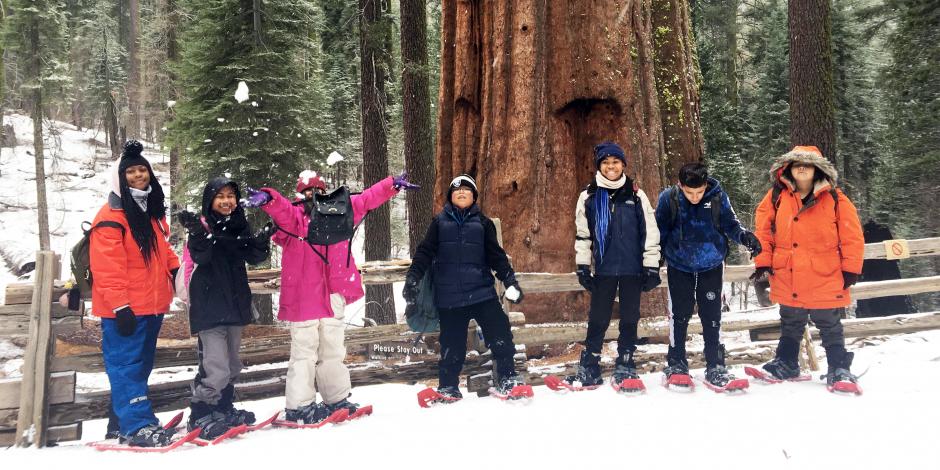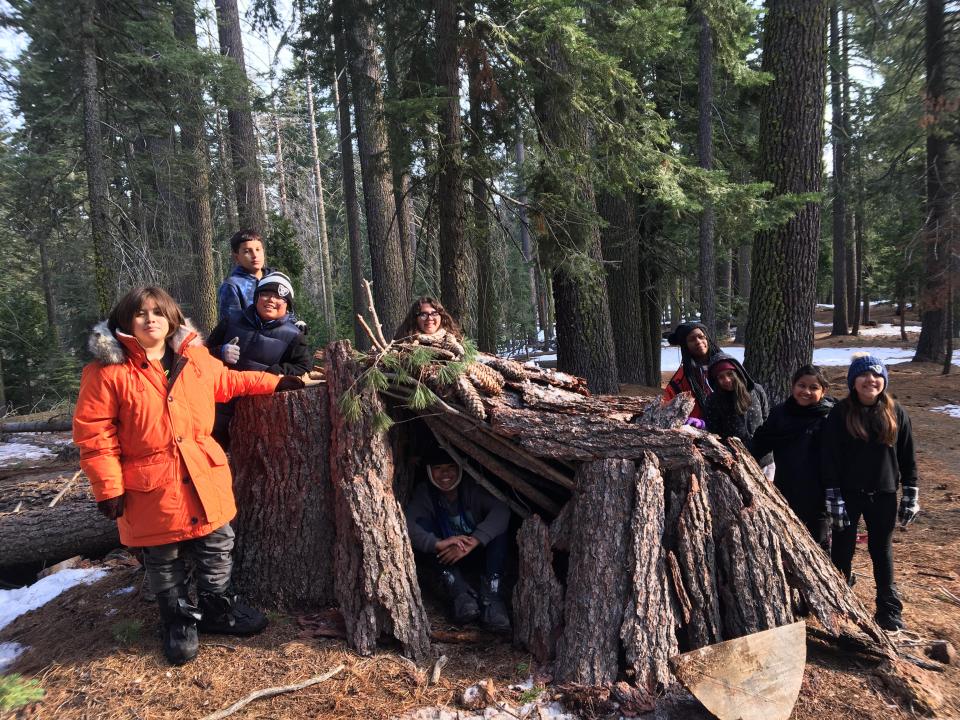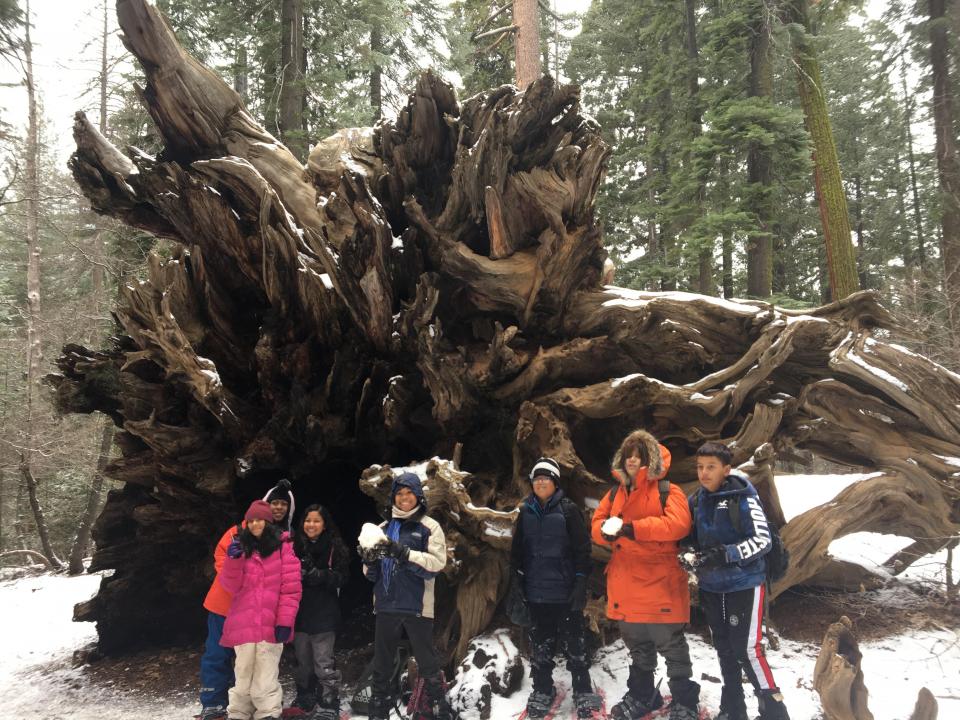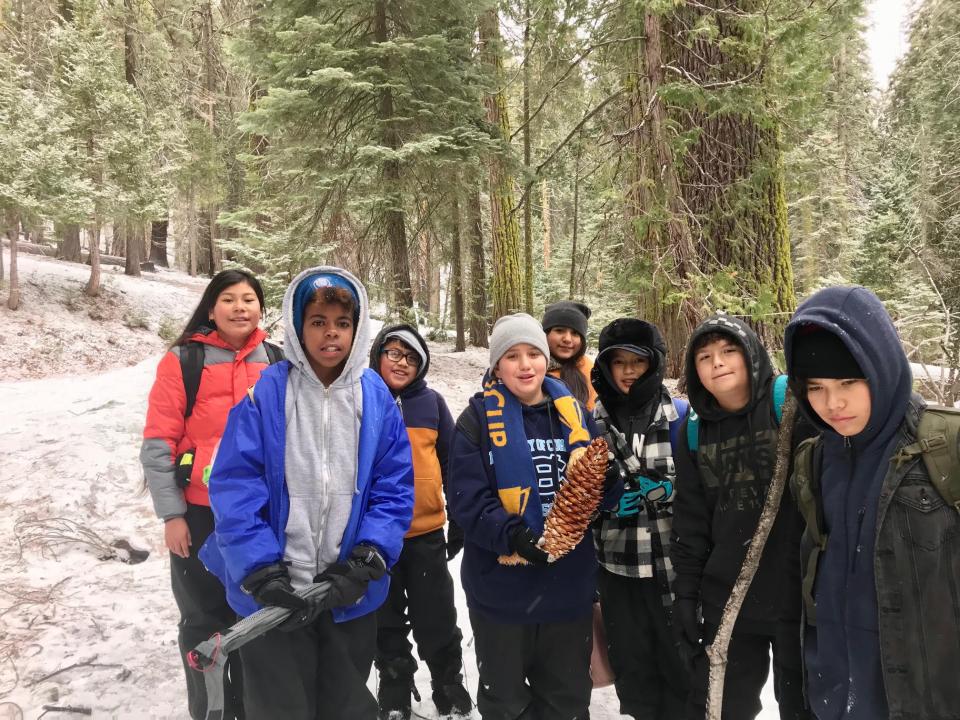Why Immersive Outdoor Experiences Are For Everyone

The snow was coming down consistently all morning, the picnic table where we sat was damp, and the snowshoes we were using were making walking a more arduous task than it had ever been. Despite these challenges and two full days in the field already behind us, there was not a single face without a smile as we ate our snowflake-sprinkled lunches.
The students from Davis Middle School arrived in Yosemite Valley with energy and enthusiasm, accompanied by a bit of trepidation. This marked their first outdoor education field trip and the first time their school had come to NatureBridge—and with the unknown comes uncertainty. Many of them had never been away from their families for more than one night, and with a seven hour bus ride between them and their comfort zone, they were faced with an invitation to see a new place in a new way for three days—with their classmates by their sides and their educators leading the way.
Our trail group began the first day by getting to know one another and talking about how we could work together as a team to aid us in whatever challenges we may face in the coming week. Students pointed out the need to communicate with one another, to be safe, to respectfully listen to one another, and of course, to have fun. They were open in sharing what they were excited and nervous about being in Yosemite and we worked on some team challenges to practice helping one another in difficult situations.
Every member of the group experienced a “first” on our first day in the field— we scrambled over rocks, discovered the invertebrates that live in the local streams, and spotted both a bald eagle and a bobcat while hiking! It was a day full of exploration and joy, followed by two more days at our Crane Flat campus playing in the snow, learning about the flora and fauna around us, and imagining how we would survive a storm by building a shelter.
As I noticed the curiosity and enthusiasm these sixth graders from Compton, CA exhibited, it made me wish that every child could have an immersive outdoor experience like the one these students had in Yosemite. Unfortunately, many schools and communities face barriers to getting outdoors: being able to take time away from work, cost prohibitive travel and lodging, and a lack of resources to know where to begin.
We are like sequoia trees because we’re tough and we hold each other up like the roots of sequoias do.Davis Middle School student
All people benefit from time spent in nature, and historically (and presently) marginalized groups tend to spend less time in the natural environments that can produce a sense of calm, joy and connection. One of the biggest barriers faced is often a sense of discomfort and a perceived lack of acceptance in the outdoors, particularly in national parks. With minimal exposure to wild outdoor spaces and having never seen anyone that looks like them spending time outdoors, people of color can feel insecure and disinterested when faced with the idea of making a trip to their public lands. I didn’t go to my first national park until I was in my late teens, simply because I never thought of it as something for me since no one in my Cuban-Dominican family ventured outdoors to recreate in the wilderness in that way.
Throughout the field of outdoor and environmental education, experts are speaking to the importance of inclusivity and representation in the outdoors, and I can attest to the need for this. Whether it’s scrolling through Instagram or hiking the trails in our national parks, it’s rare to see the diversity that mimics the types of inclusive, inviting spaces that the parks and organizations like NatureBridge strive to create. We must truly invest in both changing the exclusive culture of outdoor recreation and welcoming people from varied socioeconomic, ethnic, racial and other identity backgrounds to the national parks.
In over three years of working in environmental and outdoor education with groups from all different backgrounds, I’ve seen that every student stands to gain so much from their involvement in outdoor science, but they first must feel they are safe, comfortable and that they belong. When children are provided the support and resources to say yes to an opportunity to go outside, they stand to become champions of the environment, wherever they go in life after that. Immersive outdoor experiences can be transformational for students’ sense of self-worth and self-confidence, and it is a part of NatureBridge’s efforts to better represent the state of California in the student populations that we include.
As the students from Davis and I hiked back to campus on our last day in the field, they were exhausted, but still couldn’t stop chatting and talking about all of the fun and funny things that happened that week. A few were even talking about when and how they could come back to Yosemite. Mere days before most of them had never seen snow fall, and now they were taking turns carrying a mini snowman up a big hill to show their other friends what they created. Even after the snow melts and they ride the bus back home, their joy and the memories they made will persist. My hope is that every child is given the chance to have an immersive outdoor experience and witness all of the incredible things that can happen simply by going outside. Even those who may at first feel it’s not for them, are not immune to the positive effects of nature.
You can be a champion for youth, by helping NatureBridge ensure all students have the opportunity to connect to the outdoors. Learn more and #InvestInKids today.




